Wildflowers, Grasses and Other Nonwoody Plants
Media
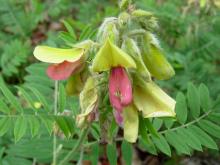
Species Types
Scientific Name
Tephrosia virginiana
Description
Two-colored flowers of pink and light yellow make goat's rue easy to identify. Look for this legume in rocky, open woods, savannas, prairies, glades, and fields.
Media
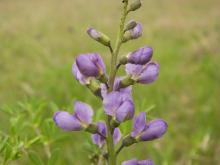
Species Types
Scientific Name
Baptisia australis
Description
Blue false indigo is a native bushy perennial with three-parted compound leaves and showy, upright stalks of blue pea flowers. The seedpods are inflated and turn black upon maturity, and the seeds rattle around in the dry pods.
Media
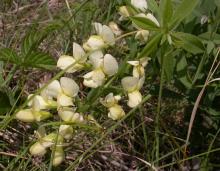
Species Types
Scientific Name
Baptisia bracteata (formerly B. leucophaea)
Description
Long-bracted wild indigo flowers April–June, while the surrounding vegetation is still short. Its racemes of creamy-white pea flowers mature into oval pods with tapering beaks.
Media

Species Types
Scientific Name
Anemone virginiana
Description
A member of the buttercup family, thimbleweed is named for the thimble-shaped dome of fruits that are densely packed at the center of the flower. Look for it blooming from late April through August in rocky or dry open woods and prairies.
Media
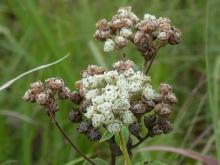
Species Types
Scientific Name
Parthenium integrifolium
Description
A common component of high-quality upland prairie, American feverfew, or wild quinine, is a native wildflower that was used to treat fevers or malaria. It's in the composite family.
Media

Species Types
Scientific Name
Gillenia stipulata
Description
Indian physic, or American ipecac, is a leafy plant that can cover entire hills in the Ozarks. Native Americans used it as an emetic for internal cleansing, a widespread ceremonial custom.
Media
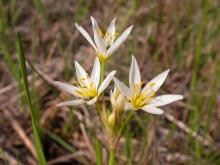
Species Types
Scientific Name
Nothoscordum bivalve
Description
False garlic looks like a wild garlic or onion plant, but it doesn’t smell like one. The flowers can be white, yellowish, or greenish, and they appear in spring and sometimes also fall.
Media

Species Types
Scientific Name
Antennaria parlinii
Description
Plainleaf pussytoes, named for its fuzzy flower heads, is one of the few flowering plants in Missouri that grows well in dry and shaded areas. It’s also an indicator of acid soils.
Media

Species Types
Scientific Name
Valerianella radiata
Description
At first glance, you might overlook corn salad, except for the large colonies it often forms. The young leaves can be eaten as a salad green, hence the name.
Media
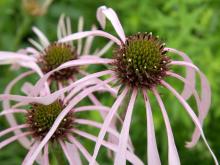
Species Types
Scientific Name
Echinacea pallida
Description
One of Missouri's five types of echinacea, pale purple coneflower is distinguished by its white pollen, drooping pink or purple ray flowers, and narrow, tapering leaves. It occurs nearly statewide, except for the Bootheel lowlands.
See Also
About Wildflowers, Grasses and Other Nonwoody Plants in Missouri
A very simple way of thinking about the green world is to divide the vascular plants into two groups: woody and nonwoody (or herbaceous). But this is an artificial division; many plant families include some species that are woody and some that are not. The diversity of nonwoody vascular plants is staggering! Think of all the ferns, grasses, sedges, lilies, peas, sunflowers, nightshades, milkweeds, mustards, mints, and mallows — weeds and wildflowers — and many more!





















